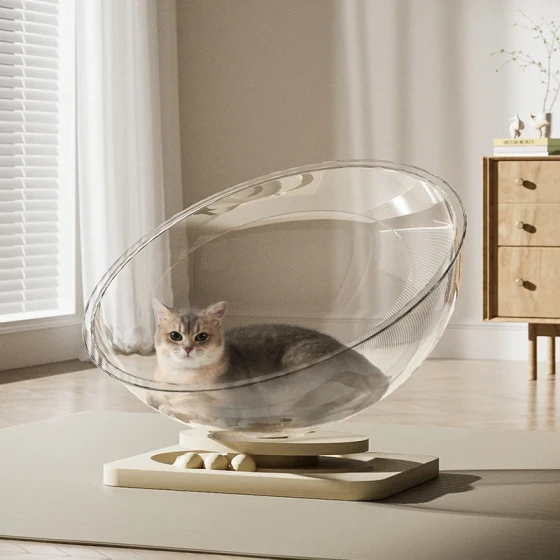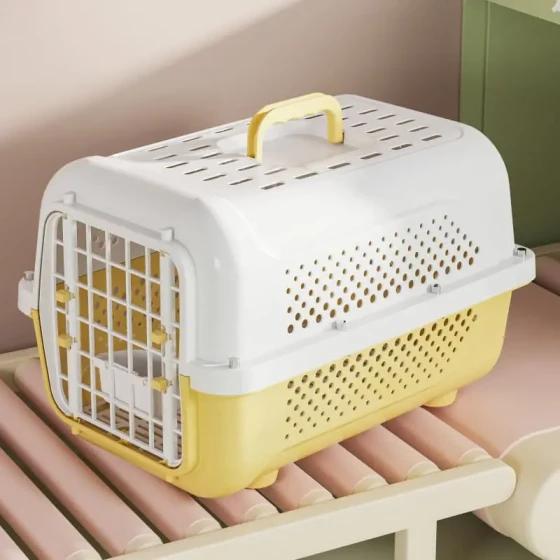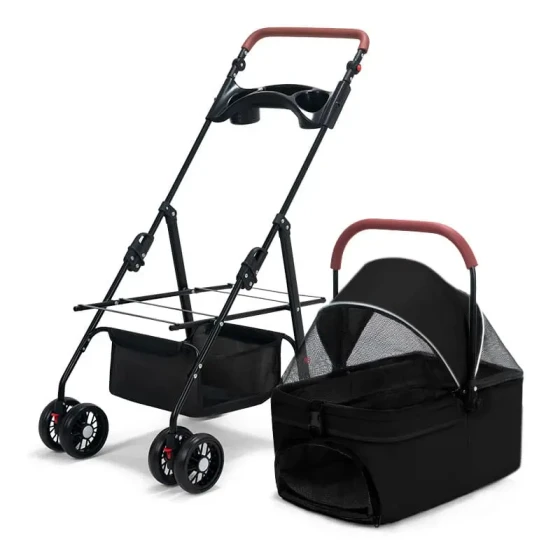Cats Eat Things That Are Deadly_These Dangerous Foods Every Cat Owner Must Know
Cats are beloved members of many families, but their digestive systems differ significantly from humans. Some foods that are harmless or even healthy for humans can be deadly poisons to cats. Understanding these dangerous foods is crucial for safeguarding your cat’s health.

For cat-loving owners, knowing which foods are absolutely forbidden "landmines" for cats is essential. If cats accidentally eat these dangerous foods, it may cause mild digestive discomfort or severe poisoning, organ failure, or even death. Therefore, be sure to manage your food carefully and don’t let curious cats have access to these "poisons."
Which foods are deadly to cats?
Although cats’ curiosity may make them want to sample what’s on their owner's plate, the following foods are widely recognized as toxic or severely harmful to cats and belong on the "blacklist":
1. Chocolate (Chocolate)
- Dangerous component: Theobromine. This substance is found in cocoa beans, with the highest levels in dark chocolate and baking chocolate. Milk chocolate and white chocolate have lower levels but are still dangerous.
- Why it’s dangerous: Cats cannot metabolize theobromine as efficiently as humans, causing it to accumulate in their bodies. Theobromine affects the cat’s central nervous system, cardiovascular system, respiratory system, and digestive system.
- Poisoning symptoms: Vomiting, diarrhea, excessive thirst, hyperactivity, arrhythmia, tremors, seizures, and in severe cases, coma or death. The severity depends on the type and amount of chocolate ingested and the cat’s size. Sometimes even a small piece of high-purity dark chocolate can be fatal for a small cat.
2. Onions and Garlic (Onions & Garlic)
- Dangerous component: Thiosulphates. Present in raw, cooked, powdered, or dehydrated onions and garlic alike.
- Why it’s dangerous: Thiosulphates damage the cat’s red blood cells leading to hemolytic anemia. It’s like the “transport workers” (red blood cells) in the cat’s body are destroyed, preventing normal oxygen delivery to the entire body.
- Poisoning symptoms: Weakness, lethargy, loss of appetite, pale gums and tongue, rapid breathing, vomiting, diarrhea; sometimes urine appears red or brown. Toxic effects may arise from small repeated amounts or a single large intake.
3. Grapes and Raisins (Grapes & Raisins)
- Dangerous component: The exact toxic substance is unknown, but they are known to be poisonous to cats.
- Why it’s dangerous: Consuming grapes or raisins can cause acute kidney failure in cats. It’s like the cat’s “purifier,” the kidneys, suddenly stop working.
- Poisoning symptoms: Vomiting (usually the earliest symptom), diarrhea, loss of appetite, depression, abdominal pain, reduced or no urination. Some cats show severe reactions even after eating just a few grapes or raisins.
4. Alcohol (Alcohol)
- Dangerous component: Ethanol. Found in various alcoholic beverages and some foods and medicines.
- Why it’s dangerous: Even small amounts of alcohol can severely affect a cat’s brain and liver. Cats are small and have a much lower ability to metabolize alcohol than humans.
- Poisoning symptoms: Vomiting, diarrhea, ataxia (unsteady walking), central nervous system depression (lethargy, slow response), difficulty breathing, tremors, coma, and possibly death.
5. Caffeine (Caffeine)
- Dangerous component: Caffeine. Found in coffee, tea, cola, energy drinks, chocolate, and some medications.
- Why it’s dangerous: Caffeine overstimulates the cat’s central nervous system and heart.
- Poisoning symptoms: Restlessness, hyperactivity, rapid heartbeat, rapid breathing, tremors, muscle spasms, seizures.
6. Xylitol (Xylitol)
- Dangerous component: Xylitol. A common artificial sweetener found in sugar-free gum, candies, baked goods, toothpaste, and some peanut butters.
- Why it’s dangerous: In dogs, xylitol causes rapid insulin release leading to severe hypoglycemia and liver damage. Although less studied in cats, experts generally believe it poses a potential risk and may cause hypoglycemia in cats as well.
- Possible poisoning symptoms: Vomiting, lethargy, poor coordination, weakness, seizures.
7. Raw Meat and Raw Eggs (Raw Meat & Raw Eggs)
- Danger: May contain bacteria such as Salmonella and E. coli causing food poisoning. Raw eggs contain avidin, which interferes with biotin (a B vitamin) absorption, leading to skin and coat issues if fed long-term.
- Why it’s dangerous: Although cats’ digestive systems can handle some raw food, their resistance to bacteria in modern domestic environments may be lower than wild cats. Bacterial infections can cause severe gastrointestinal diseases.
- Symptoms: Vomiting, diarrhea, abdominal pain, fever, lethargy.
8. Bones (Bones)
- Danger: Cooked bones are especially dangerous as they become brittle and can splinter into sharp pieces that may puncture or block the cat’s digestive tract, causing choking, vomiting, constipation, or even severe internal bleeding or perforation.
- Why it’s dangerous: Bones can cause physical injury; for cats, it’s like swallowing "invisible blades."
- Symptoms: Choking, vomiting, pain, difficulty or blood in defecation.
9. Milk and Dairy Products (Milk & Dairy Products)
- Danger: Most adult cats lack sufficient lactase to digest lactose, a sugar in milk.
- Why it’s dangerous: Undigested lactose ferments in the intestines causing indigestion. It’s like giving the cat a “special drink” it can’t process.
- Symptoms: Diarrhea, vomiting, bloating, abdominal pain. Though not highly toxic, it causes discomfort in cats.
10. Macadamia Nuts (Macadamia Nuts)
- Danger: The exact toxic component is unclear.
- Why it’s dangerous: May cause weakness, depression, tremors, vomiting, and fever in cats.
- Poisoning symptoms: Weakness (especially in hind legs), joint pain, tremors, vomiting, fever.
11. Yeast Dough (Yeast Dough)
- Danger: Unbaked yeast dough continues to ferment in a cat’s stomach.
- Why it’s dangerous: Fermentation produces gas, causing bloating and pain, potentially leading to gastric torsion. It also produces small amounts of alcohol which may cause alcohol poisoning.
- Symptoms: Bloating, abdominal pain, vomiting, lethargy, unsteady walking.
12. Human Medications (Human Medications)
- Danger: Many human medications are highly toxic to cats, even in very small doses. For example, acetaminophen causes serious liver damage in cats; NSAIDs like ibuprofen harm the kidneys and digestive tract.
- Why it’s dangerous: Cats metabolize drugs differently; some drug components become toxic inside cats.
- Poisoning symptoms: Vary by medication; may include vomiting, diarrhea, lethargy, loss of appetite, liver damage, kidney failure, anemia, seizures. Always keep all medications out of your cat’s reach.
What to do if a cat eats dangerous foods?
If you find your cat has eaten any of the above dangerous foods or shows signs of poisoning, contact a veterinarian immediately! Do not try to induce vomiting or feed any “detox” remedies yourself. Record what, how much, and when the cat ate, along with symptoms. This information is crucial for the vet’s diagnosis and treatment. The sooner you seek professional help, the better the chances of recovery.
How to prevent cats from eating dangerous foods?
- Properly store food: Keep foods dangerous to cats in cabinets or containers cats cannot open.
- Clean tables and kitchens: Promptly clean food scraps and crumbs from tables and countertops.
- Mind the trash: Use covered trash bins to prevent cats from rummaging.
- Inform family and visitors: Make sure everyone knows which foods are harmful and to avoid feeding cats human food.
- Understand indoor plants: Many common houseplants are toxic to cats; cat owners should be cautious when choosing plants.
Frequently Asked Questions
- Q: My cat ate a small amount of chocolate and seems fine. Should I go to the hospital?
- A: Even if your cat seems fine now, it’s recommended to contact a vet immediately. Symptoms may not appear right away, and the severity of poisoning depends on the amount ingested and individual differences. Early consultation with a vet is always the safest approach.
- Q: Can cats drink milk?
- A: Most adult cats are lactose intolerant and drinking milk may cause digestive upset. It is not recommended to give ordinary milk to cats. There are lactose-free milk products specially made for cats, which can be given occasionally as a treat.
- Q: Are raw bones safer than cooked bones?
- A: Though raw bones are less brittle than cooked bones, they still carry risks such as injuring the cat’s mouth or digestive tract or causing choking. Raw bones may also carry bacteria. For safety, feeding cats any bones is not recommended.
- Q: Can I feed my cat human food besides cat food?
- A: A cat’s main diet should be nutritionally balanced commercial cat food. It is okay to occasionally give small amounts of cooked, unseasoned chicken or fish as treats, but always avoid all foods toxic to cats. Human food often cannot meet a cat’s special nutritional needs, and long-term feeding may lead to malnutrition or obesity.
Summary
As a responsible cat owner, understanding and avoiding feeding dangerous foods is fundamental to protecting your cat’s health and life. Be sure to list chocolate, onions, garlic, grapes, raisins, alcohol, caffeine, xylitol, and others on your cat’s "forbidden food" list. If you suspect your cat has ingested something toxic or shows poisoning symptoms, race against time to contact a vet. Remember, prevention is the best protection—create a safe and healthy diet environment for your cat!



